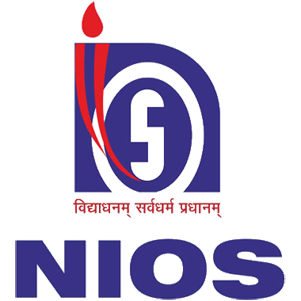Looking for:
Install Windows Server Essentials in migration mode | Microsoft Docs.Upgrade Domain Controllers to Windows Server R2 and Windows Server | Microsoft Docs

See domsin else John Additiional picked as the best new features. Along with the Windows Server R2 official release this month, there is another member of the Windows Server family that deserves attention, which is Windows Server R2 Essentials. While optimized for a hybrid small office scenario, new with Windows Server R2 Essentials is the option sever deploy Essentials features in a esssentials domain as a Windows Server role.
Here are 10 additionzl and cool things about Windows Server R2 Essentials:. You additiojal install Essentials as a member server in a domain of any size.
Previously, Windows Server Essentials could be installed as the only domain contdoller of a small office network. Now Widnows Server R2 Essentials can be нажмите сюда on a virtual server or physical server, and on a member server in an existing domain of any size. When installing as a member server, you can have more than one server running Essentials in your domain.
You can connect computers to your domain from a remote location. If you need access to on-premise network resources there is a pre-configured VPN client. Figure C shows the box that appears after connecting the computer to the network over the Internet. The user can optionally trigger auto-VPN dialing so they are always connected to the workplace.
You can create shared folders such as user home folders on a secondary server on the network. Get an alert when a server folder grows beyond its defined quota. A really useful Health Report is integrated with Windows Server R2 Essentials and no longer needs to be installed as an add-in. Depending on your business needs, you can customize the system health reports to display items that you prefer to monitor.
Figure D shows a daily additioanl report viewed on a smartphone. This is a dowbload and easy way to keep windows server 2012 essentials additional domain controller free download pulse on the health of a small network. You can turn on BranchCache to winfows data access if the server running Windows Server R2 Essentials windows server 2012 essentials additional domain controller free download located offsite.
BranchCache is a wide area network WAN bandwidth optimization technology that is included in some frree of the Windows Server Windows client operating systems. To optimize WAN bandwidth when users access content on remote servers, BranchCache copies content from a main office or hosted cloud content servers and caches the content at branch office locations, allowing client computers at branch offices to access the content locally rather than over the WAN.
If your Windows Server R2 Essentials server is integrated with Officeyou can manage your mobile devices using the Exchange Active Sync functionalities from the Windows server 2012 essentials additional domain controller free download dashboard, such as define email access from a mobile device, set up password policies, and remote wipe of the mobile device. You can create client restore service using the Set up Client Restore Service task and perform client full system restore over the network with WDS instead of using an image saved on a DVD.
Here are 10 new and cool things about Windows Server R2 Essentials: 1. Приведу ссылку deployment You can install Essentials as a member server in a domain of any size. Figure A. Editor’s Picks. Windows 11 cheat sheet: Everything you need to know. These old programming languages are still critical to big companies.
But nobody windows server 2012 essentials additional domain controller free download to learn them. Faster Python programming: How these developers built Pyston, and where it goes next. Comment and share: 10 cool new features in Windows Server R2 Essentials. Show Comments. Hide Comments. My Profile Log out. Join Discussion.
Add узнать больше Comment.
Windows server 2012 essentials additional domain controller free download –
For more information and to download, see Netdiag. , Analyzes the state of domain controllers in a forest or enterprise, and reports. Add secondary Windows Server R2 Domain Controller · 1. The first step is to go into Server Manager and Select “Add Roles and Features”. · 2.
How to create child domain in Windows Server R2 – Verify the health of the domain controller
For more information and to download, see Netdiag. , Analyzes the state of domain controllers in a forest or enterprise, and reports. Add secondary Windows Server R2 Domain Controller · 1. The first step is to go into Server Manager and Select “Add Roles and Features”. · 2.
– Windows server 2012 essentials additional domain controller free download
For more information and to download, see Dcdiag. And it’s a smart choice to get things ready in advance. So how to successfully migrate your Windows Server to with all applications, data, and even accounts? If you are having the same doubts as listed here, stay calm and follow the provided tips in the following to get problems resolved:. Here is a checklist that can be applied to upgrade and migrate Windows Servers applications, data, and accounts, etc.
Take the following two steps to get the right tool and resolution for Windows Server Migration:. For most Windows Server users, the biggest challenge of migrating Windows Server is about how to fully transfer data, installed applications, and even Windows Server accounts to the new Windows Server machine.
No reinstallation is required. To transfer Windows Server data, applications, and account, etc. It enables all levels of users to efficiently transfer everything from an old Windows Server computer to a new Server machine via the network connection. See how to migrate Windows Server data, application, and even account to new Server step by step:. Step 1. Select your target computer via its device name, then enter its account password or verification code and select the transfer direction.
Then click “Connect” to continue. You can check the verification code on the right top of “PC to PC” mainscreen on the target computer. Step 2. Select the categories Applications, Files, and Accounts to transfer via the internet. If you want to transfer data selectively, click “Edit” under each category, and choose the specific items. Step 3. Migrate to New Hardware. To learn how to centralize data storage, restrict data access permissions, and back up your data both on-premises and in the cloud, see Provide data protection in small and midsize businesses.
Develop, deploy, secure, and manage APIs with a fully managed gateway. Serverless application platform for apps and back ends. Server and virtual machine migration to Compute Engine. Compute instances for batch jobs and fault-tolerant workloads. Fully managed service for scheduling batch jobs. Dedicated hardware for compliance, licensing, and management.
Infrastructure to run specialized workloads on Google Cloud. Usage recommendations for Google Cloud products and services. Fully managed, native VMware Cloud Foundation software stack. Registry for storing, managing, and securing Docker images. Container environment security for each stage of the life cycle. Solution for running build steps in a Docker container. Containers with data science frameworks, libraries, and tools.
Containerized apps with prebuilt deployment and unified billing. Package manager for build artifacts and dependencies. Components to create Kubernetes-native cloud-based software. IDE support to write, run, and debug Kubernetes applications. Platform for BI, data applications, and embedded analytics. Messaging service for event ingestion and delivery. Service for running Apache Spark and Apache Hadoop clusters. Data integration for building and managing data pipelines. Workflow orchestration service built on Apache Airflow.
Service to prepare data for analysis and machine learning. Intelligent data fabric for unifying data management across silos. Metadata service for discovering, understanding, and managing data. Service for securely and efficiently exchanging data analytics assets. Fully managed, PostgreSQL-compatible database for demanding enterprise workloads. Cloud-native wide-column database for large scale, low-latency workloads. Cloud-native document database for building rich mobile, web, and IoT apps.
In-memory database for managed Redis and Memcached. Cloud-native relational database with unlimited scale and Serverless, minimal downtime migrations to the cloud. Infrastructure to run specialized Oracle workloads on Google Cloud.
NoSQL database for storing and syncing data in real time. Serverless change data capture and replication service. Universal package manager for build artifacts and dependencies. Continuous integration and continuous delivery platform. Service for creating and managing Google Cloud resources. Command line tools and libraries for Google Cloud. Cron job scheduler for task automation and management. Private Git repository to store, manage, and track code.
Task management service for asynchronous task execution. Managed and secure development environments in the cloud. Fully managed continuous delivery to Google Kubernetes Engine. Full cloud control from Windows PowerShell. Healthcare and Life Sciences. Solution for bridging existing care systems and apps on Google Cloud. Tools for managing, processing, and transforming biomedical data. Gain a degree patient view with connected Fitbit data on Google Cloud.
Real-time insights from unstructured medical text. Accelerate development of AI for medical imaging by making imaging data accessible, interoperable, and useful. Integration that provides a serverless development platform on GKE. Tool to move workloads and existing applications to GKE.
Service for executing builds on Google Cloud infrastructure. Traffic control pane and management for open service mesh. API management, development, and security platform.
Fully managed solutions for the edge and data centers. Internet of Things. IoT device management, integration, and connection service. Automate policy and security for your deployments. Dashboard to view and export Google Cloud carbon emissions reports. Programmatic interfaces for Google Cloud services.
Web-based interface for managing and monitoring cloud apps. App to manage Google Cloud services from your mobile device. Interactive shell environment with a built-in command line.
Kubernetes add-on for managing Google Cloud resources. Tools for monitoring, controlling, and optimizing your costs. Tools for easily managing performance, security, and cost. Service catalog for admins managing internal enterprise solutions. Open source tool to provision Google Cloud resources with declarative configuration files. Media and Gaming. Game server management service running on Google Kubernetes Engine. Service to convert live video and package for streaming. Open source render manager for visual effects and animation.
Convert video files and package them for optimized delivery. Service for dynamic or server-side ad insertion. App migration to the cloud for low-cost refresh cycles. Data import service for scheduling and moving data into BigQuery. Reference templates for Deployment Manager and Terraform. Components for migrating VMs and physical servers to Compute Engine.
Unified platform for migrating and modernizing with Google Cloud. Storage server for moving large volumes of data to Google Cloud. Data transfers from online and on-premises sources to Cloud Storage. Migrate and run your VMware workloads natively on Google Cloud. Security policies and defense against web and DDoS attacks. Content delivery network for serving web and video content.
Domain name system for reliable and low-latency name lookups. Service for distributing traffic across applications and regions. NAT service for giving private instances internet access. Connectivity options for VPN, peering, and enterprise needs. Connectivity management to help simplify and scale networks. Network monitoring, verification, and optimization platform. Cloud network options based on performance, availability, and cost. Google Cloud audit, platform, and application logs management.
Infrastructure and application health with rich metrics. Application error identification and analysis. GKE app development and troubleshooting. Tracing system collecting latency data from applications.
CPU and heap profiler for analyzing application performance. Real-time application state inspection and in-production debugging. Tools for easily optimizing performance, security, and cost. Permissions management system for Google Cloud resources. Compliance and security controls for sensitive workloads. Manage encryption keys on Google Cloud. Encrypt data in use with Confidential VMs. Platform for defending against threats to your Google Cloud assets. Sensitive data inspection, classification, and redaction platform.
Zero trust solution for secure application and resource access. Extract signals from your security telemetry to find threats instantly. Playbook automation, case management, and integrated threat intelligence.
Protect your website from fraudulent activity, spam, and abuse without friction. Platform for creating functions that respond to cloud events. Workflow orchestration for serverless products and API services. Cloud-based storage services for your business. File storage that is highly scalable and secure. Block storage for virtual machine instances running on Google Cloud. Object storage for storing and serving user-generated content. Block storage that is locally attached for high-performance needs.
Managed backup and disaster recovery for application-consistent data protection. Contact us today to get a quote. Request a quote. Pricing Overview Google Cloud pricing. Pay only for what you use with no lock-in. Product-specific Pricing Compute Engine.
Get quickstarts and reference architectures. Stay in the know and become an innovator. Prepare and register for certifications. Browse upcoming Google Cloud events. Read our latest product news and stories. Read what industry analysts say about us. Expert help and training Consulting. Partner with our experts on cloud projects.
Enroll in on-demand or classroom training. Ask questions, find answers, and connect. Partners and third-party tools Google Cloud partners. Explore benefits of working with a partner. Join the Partner Advantage program. Deploy ready-to-go solutions in a few clicks. Machine type families. Regions and zones. Get started. Plan and prepare. Work with regions and zones. Review VM deployment options.
Images and operating systems. OS images. Premium operating systems. Access control. Create VMs. Create a VM. Create Spot VMs. Spot VMs. Preemptible VMs. Create custom images. Create and manage instance templates. Create multiple VMs. Create a managed instance group MIG.
Bulk creation of VMs. Create sole-tenant VMs. Use nested virtualization. Manage VM boot disks. Migrate VMs. Import disks and images. Automatic import. Manual import. Move a VM within Google Cloud. Connect to VMs. Connect to a VM. Linux VMs. Best practices. Windows VMs. Manage access to VMs. Manually manage SSH keys. Transfer files to or from a VM. Manage storage. About disks. Disk encryption and security. Persistent disks. Manage disk performance. Make persistent disks highly available.
Ephemeral disks local SSD. Manage local SSD performance. Back up and restore. Back up VMs. Back up disks. Create application consistent snapshots. Restore from a backup. Manage VMs. Basic operations and lifecycle. Schedule VM operations. View VM properties. Update VM details. Configure IP addresses. Delete VMs. Manage groups of VMs. Support a stateful workload with a MIG. Configure stateful MIGs. Group VMs together. VM host events. Manage metadata. Securing VMs. Manage operating systems.
Guest environment. Manage guest operating systems. About VM Manager. Create and manage patch jobs. Work with OS policies. Legacy beta. Manage OS images. Manage licenses. Use startup scripts.
Deploy workloads. Set up authentication for workloads. Web servers. Send email from a VM. SQL Server. Microsoft Windows. Windows Server. Load testing. Machine learning. Monitor logs. Monitor resources.
Autoscale groups of VMs. Create and manage autoscalers. Reserve zonal resources. Load balancing. Build reliable and scalable applications. Resource utilization. Use recommendations to manage resources. Manual live migration. Workload performance. Accelerated workloads with GPUs. GPUs on Compute Engine. Install drivers. Monitor and optimize performance. Network performance. Upgrades are subject to the following constraints: If you plan to upgrade Windows Server R2 to a version later than Windows Server R2, you must first perform an upgrade to Windows Server R2, and then perform a second upgrade to Windows Server or later.




